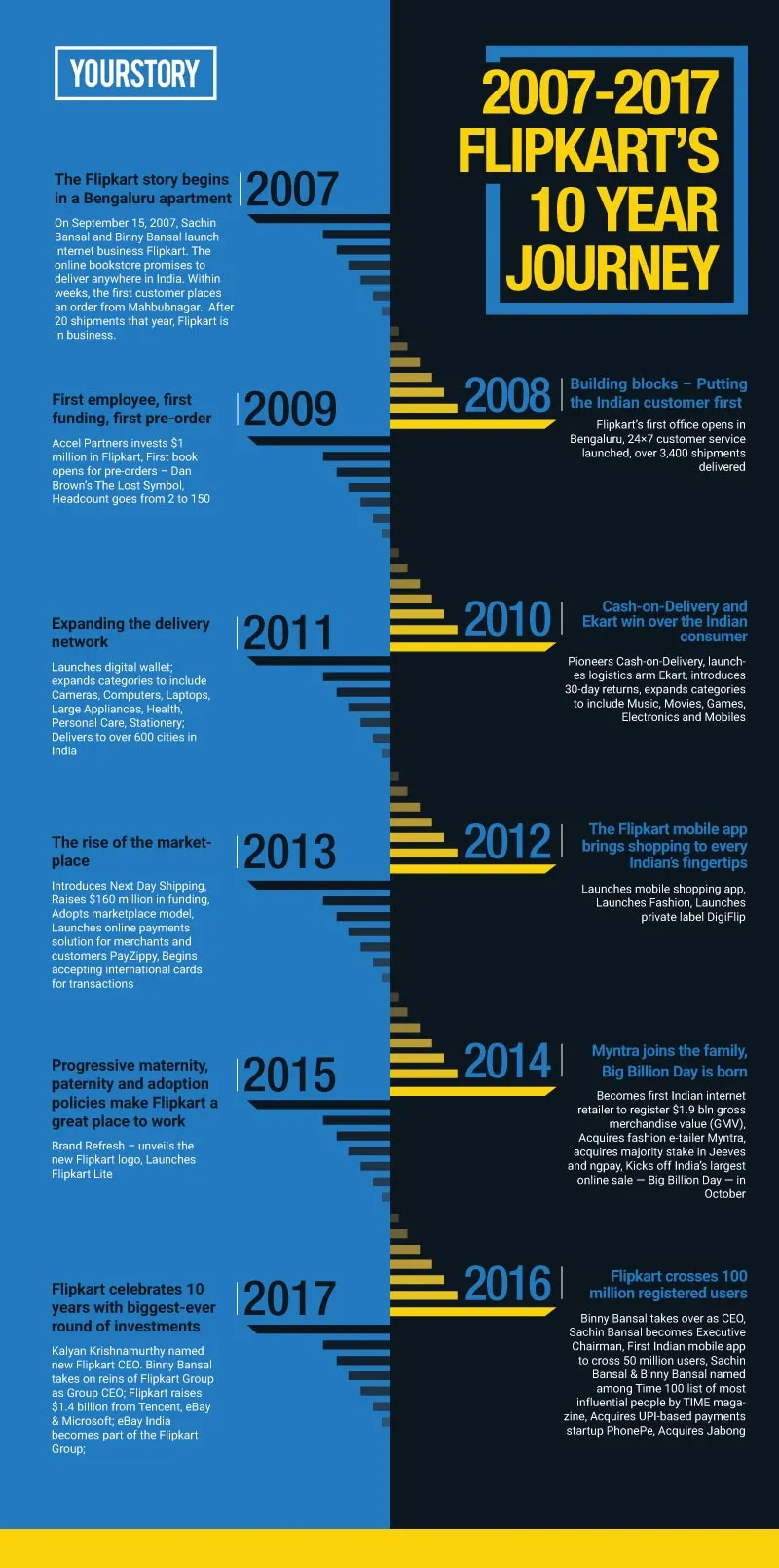After 10 years of defining the Indian e-commerce story, what’s next for Flipkart
As Flipkart turns 10, YourStory traces its journey to see what awaits over the next decade
It was in late 2007 that two IIT-Delhi graduates with a couple of years’ work experience at Amazon’s India office decided to start their own venture. E-commerce, as India knew it from Indiamart, was to change forever, though nobody knew it at that time.

Sachin and Binny Bansal (not related) started with selling books online on their brainchild ‘Flipkart’, and the Indian customer watched with curiosity.
As time passed, both Flipkart and the customer base grew.
Flipkart brought multiple retail categories online, a cash on delivery system, and huge discounts that took e-commerce to the masses. Investors took notice; something big was happening.
Over the years, funding of around $7 billion has been poured into Flipkart by investment tycoons like Tiger Global, SoftBank, and Tencent, among others. Sachin and Binny became celebrities in their own right, and anything related to Flipkart became news.

Sachin later confessed he and Binny had hoped Flipkart would become a $100 million company. Destiny, however, had something else in store – Flipkart hit the $15 billion valuation mark in less than a decade, acquired Myntra, Phonepe, and Jabong, and both co-founders went on to become billionaires.
Most importantly, Flipkart became the poster child of the Indian startup ecosystem which has received global attention in the last few years.
This does not mean Flipkart’s journey has been a bed of roses. Its first-ever effort at ‘Big Billion Day Sale’ (in 2014) attracted severe backlash on the one hand as the website crashed, while on other, the company claimed it achieved its sales target of $100 million in GMV in a matter of 10 hours.
The year 2016 saw Flipkart’s valuation going downhill, and major leadership changes along with a high rate of attrition.
Despite the criticism over the years, Flipkart has a special place in the mind of observers of the Indian startup ecosystem. For a generation of entrepreneurs, Flipkart was the inspiration to start up.
Even US-based retail behemoth Amazon entry to India has Flipkart to thank – for opening up the e-commerce market in the country. Today, the battle between the two in India’s e-commerce space has gotten fiercer, while Alibaba-backed Paytm Mall and ShopClues are fighting their own battles alongside. Flipkart, now, has to put the past ten years of achievement, failures, and struggles behind as the next two years will decide the company’s fate in profitability, sustainability, and exit.
Granted, Flipkart is the first e-commerce company in India to be valued at $1 billion – a title that every startup secretly hopes to achieve - but at the end of the day, any business is successful only when it makes profit.
Under the reign of Kalyan Krishnamurthy, who took over as CEO earlier this year, Flipkart is going all out in its efforts for profitability. Sachin, who is now executive chairman, is in charge of Flipkart’s budget brand ‘Billion’ while Binny – as CEO of the Flipkart Group – continues to be the man behind the scenes.
The company is close to launching its grocery category, the largest category in Indian retail. It has established itself in fashion, the highest margin category, has re-launched furniture at scale, and is reportedly in talks with online furniture e-tailer Urban Ladder for a takeover.
Consumer internet is not a kind sector. Flipkart is yet to come up with a differentiation factor which will make it stand out.
The responsibility on Flipkart is huge – after a historical ten years, when will Flipkart start living the Indian startup dream?
To know more about Flipkart's growth strategy, read The age of Flipkart







